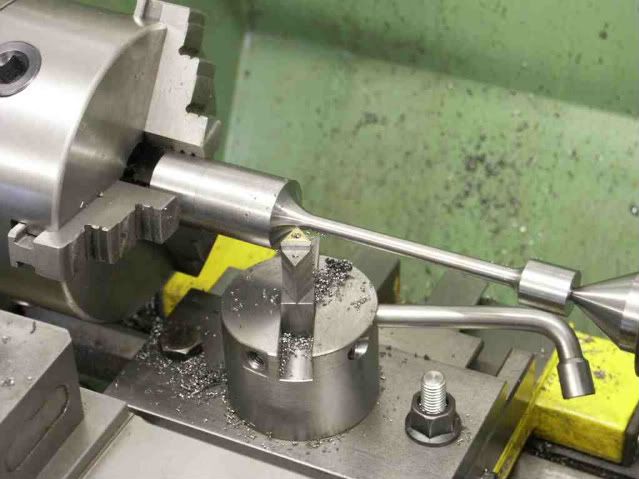I’ve been following this thread with some interest as have often felt that such a tool would be useful to have. Having never cut any spheres with anything other than a form tool though I felt it much better to ‘listen’ and learn.
The last few posts however rang a bell as quite a few years back, whilst at work, somehow this subject came up. At that time I could recall having seen or read somewhere that this could be done on a milling machine using a boring head for cutting and a dividing head for rotation.
A short piece of ally bar about an 1″ diameter had a centre put in one end and that end had a relief put in with a parting tool leaving the end the same width as it’s diameter. (hope that makes sense). The dividing head with three jaw chuck mounted was set up in a conventional (horizontal) fashion with the piece held in the three jaw and supported by a tailstock centre.
The boring head had a cranked tool set in reverse ie pointing inwards and set to the approximate radius of the ball desired. With the axis of mill and dividing head in line and centred about the turned end portion of the blank the head was rotated as the boring tool was brought into contact. As the table was raised the ball was generated seemingly quite magically as I recall. Because of the centre a full ball could not be formed which does not answer the original question – ‘How does one form a complete ball and part off’
but a large enough ball to see that it works well enough was produced
Apart from this one time however, done purely to see if this method would work, I have never heard of it described nor had need to use it.
Looking at the George Thomas type tool however I felt the similarity of operation could be seen.
Ha ha – Just been out to the workshop and a quick rummage in the old tool chest found this
This is the actual part described – I thought it was lurking somewhere. You can see the generated tool marks quite easily – this was just a test piece after all but a round nose tool would no doubt improve matters considerably.
As said – doesn’t answer Nobby’s question directly but may be of interest to some one
Regards – Ramon
Edited By Ramon Wilson on 09/01/2011 13:02:59
Nobby.














